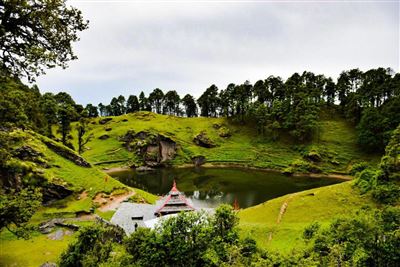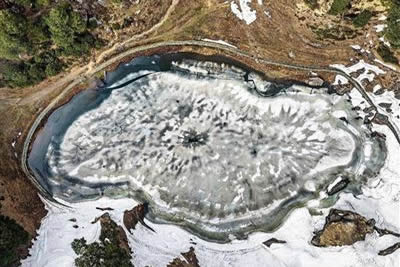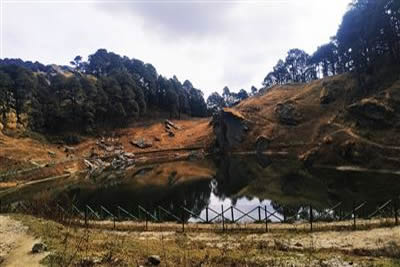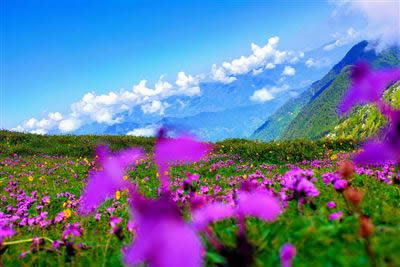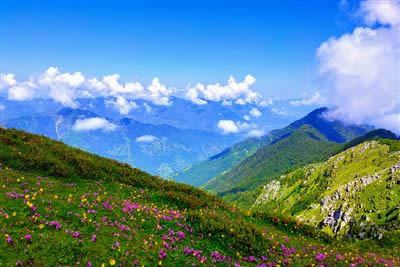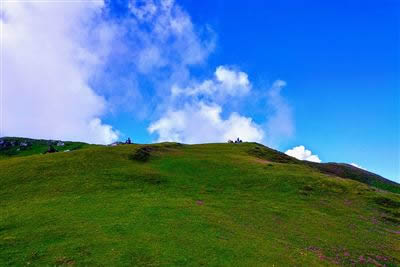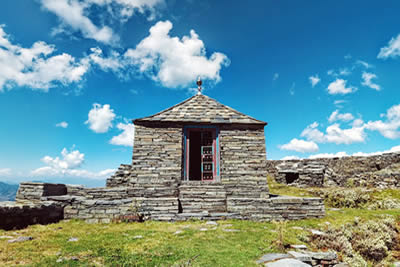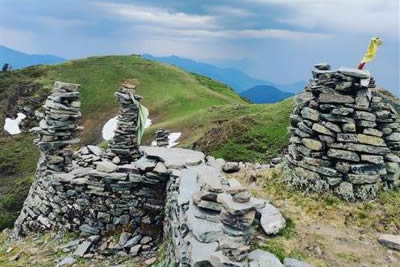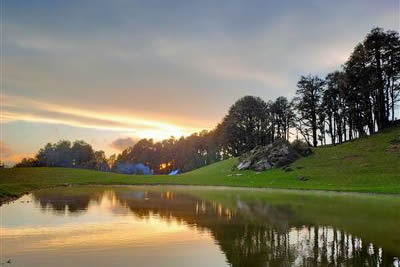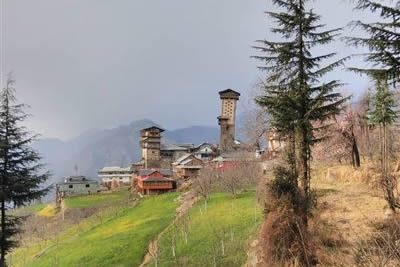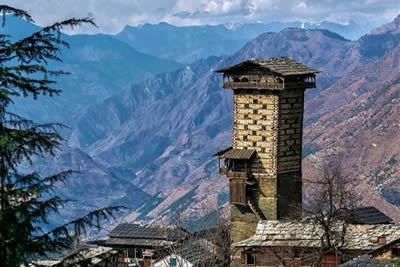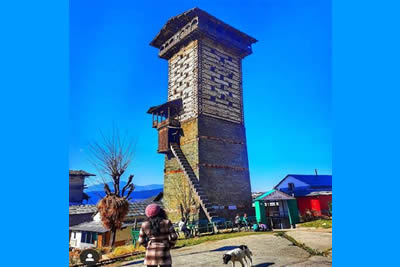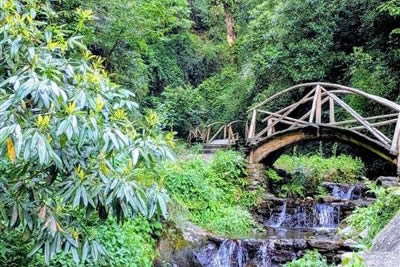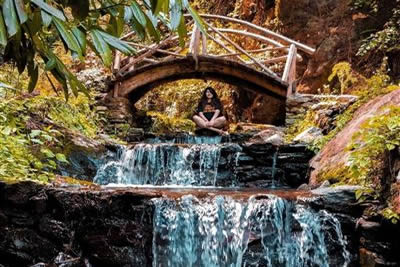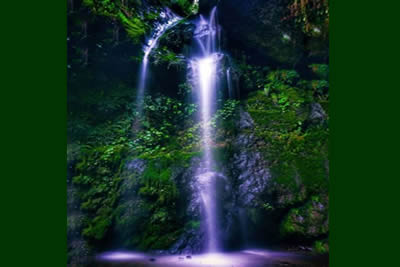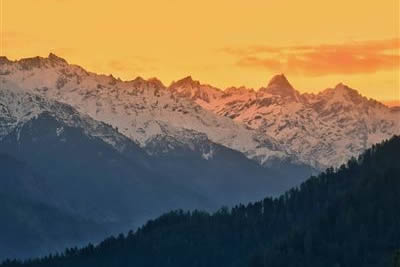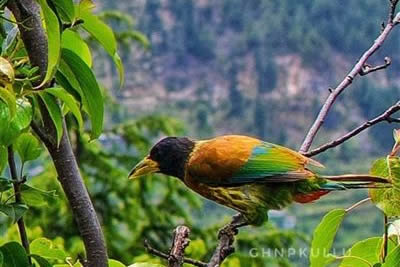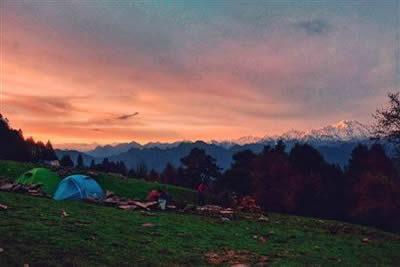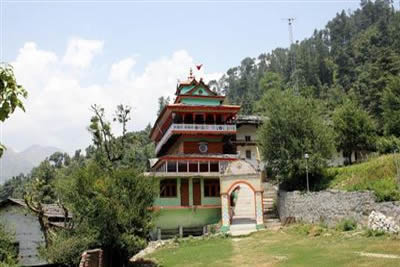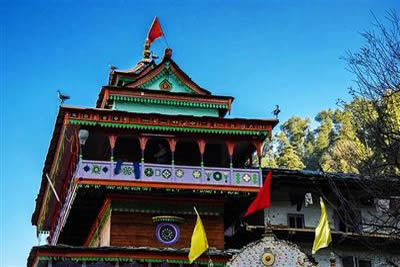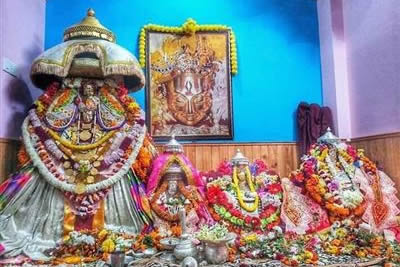Places of Interest
1. Serolsar Lake
At a distance of 78 km from Kullu, 84 km from Mandi, 25 km from Banjar and 10 km from Shoja, Serolsar Lake is a beautiful lake situated at a distance of around 5 km from the Jalori pass. This lake can be reached by a trek from Shoja or Jalori Pass. Serolsar Lake is located at an altitude of 3199 m. It is surrounded by thick vegetation of alpine forests. There is a myth that even if a small leaf falls into the Lake the birds around takes them out of the lake and keeps the water crystal clear. The water of the lake is believed to have medicinal properties. The Lake has a narrow walking track lined up with thick tall trees on the outer side. On one side of the Lake is a small temple of Buddha Nagini. The devotees worship and offer ghee to the deity. It is said that the lake is very deep and that Budhi Nagin herself lived in a golden palace at the bottom of the lake. The trek from Jalori Pass to Serolsar Lake is a 5 km one way and takes about 2 hrs. The trek starts from just below the temple atop Jalori pass. In winter, Serolsar experience snowfall up to 5-8 ft. The place is best to visit during summers. People visiting this place are advised to come with their own food and necessary woolen clothing. Now, small rest houses have also been built to provide accommodation to the visitors. This place can be visited as a one day trip from Kullu if started early in the morning.
2. Lambhari Top
Lambhri Hike in Himalayas is a best trek towards a beautiful meadow. This trek is 3 days trek. The maximum altitude is 4000 mtrs. Experience the 360 degree panaromic view from the top of the altitude which is flat and wide amazing landscape in himalayas. Green carpeted slopes surronded by dense forests of pines. A dirt road goes to the pretty village of Sharchi, which is 19 kilometres from Gushaini. Sarchi is located high above in the mountains and is a base for the climb to Lambri Top. The hike passes through pretty forests to the village of Jamala which is a steep one hour climb from Sharchi. Lambhri Top has mesmerizing views of the entire Tirthan Valley. It is a lovely place to camp with uninterrupted sights of greenery.
3. Raghupur Fort
Raghupur Fort that offers 360 degree valley views that stretch as far as the Dhauladhar ranges. Raghupur Fort, also known as Raghupur Garh, is approximately a 3 km trek from Jalori Pass and is a ruined fort with hardly a few walls standing. The walk to Raghupur Fort passes through a lovely forest and has spectacular views of the mountains. As you reach the meadows where the fort is located, there are unbelievable views that stretch as far as your eyes can see. Origin and building year of the fort is not known. It is possible to camp at this meadow in summers if you are travelling in a group and can hire tents, guides and porters at Banjar, Jibhi, Sojha or Jalori Pass. Both these places are easily accessible and do not require the services of a guide if you do not plan for a night stay. It is recommended to eat food at the dhaba, carry lots of water and packed food with you on the hike.
4. Chehni Kothi
These Tower Temples of Kullu Valley were built primarily as garrisoning stations. As a defensive structure that not only provided a vantage point for safeguarding the village but also served as a storage structure. This tower temple of Chaini is the tallest standing structure of its kind in the entire Western Himalayas. Currently, the Great Tower of Kothi is 45 meters (approx.) tall. This tower survived the devastating 1905 Kangra earthquake, although it ended up two upper storeys short because of the earthquake shocks. A restoration program carried out by the locals helped in the preservation and restoration of this temple. It is believed that this temple was built around the 17th Century by a local King Dhadhu and that’s why this temple is locally known as Dhadhiya Kothi as well. The tower temple stands on a plinth, which is almost 15 meters deep, and is made of locally available stone and deodar wood.
5. Jibhi Water Falls
Jibhi waterfall is situated approximately 2 km trek from ghiyagi... It is natural and spectacular.. It's hidden between hills and forest.
6. Great Himalayan National Park (GHNP)
The Great Himalayan National Park (GHNP), is one of India's national parks, is located in Kullu region in the state of Himachal Pradesh. The park was established in 1984 and is spread over an area of 754 km square km2 at an altitude of between 1500 and 6000 m. The Great Himalayan National Park is a habitat to numerous flora and more than 375 fauna species, including approximately 31 mammals, 181 birds, 3 reptiles, 9 amphibians, 11 annelids, 17 mollusks and 127 insects. They are protected under the strict guidelines of the Wildlife Protection Act of 1972; hence any sort of hunting is not permitted. In June 2014, the Great Himalayan National Park was added to the UNESCO list of World Heritage Sites. The Unesco World Heritage Site Committee granted the status to the park under the criteria of "outstanding significance for biodiversity conservation".
7. Shringa Rishi Temple
The temple is located in the Banjar Valley in Kullu, Himachal Pradesh. Shringa rishi temple Banjar is a famous religious center tribute to Shringa Rishi. The locals consider the temple as a very sacred place and Shringa Rishi as their protector. He is believed to be one of the eighteen chief deities of the Kullu Valley. There is a strong belief that the birthplace of Lord Ram, the most famous incarnation of God. Shringa Rishi's ashram was at Chehni. During Safya yug, he was the sage of PutreshtiyajnaYagnya for Raja (king) Dasharatha of Ayodhya. Shringa rishi temple Banjar is believed to have high spiritual energy as it was the meditation center for many rishis. This is one of the highly recommend religious centers to visit in Kullu. Specifically in May, thousands of pilgrims come to visit this famous temple because the rest of the year it becomes inaccessible due to thickly covered snow. The location of this temple is in the midst of a marvelous view of the landscape which includes the lush green meadows, snow-capped mountains along with the dense growth of Himalayan trees indeed. And without any doubt, it is one of the best places to visit in Kullu.
